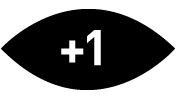

It's kind of wild to think about what a cultural phenomenon Freddy Krueger became in the late '80s after the runaway success of New Line Cinema's Nightmare on Elm Street series. He basically became what R2-D2 and C-3PO were in the late '70s: Iconic movie characters who appeared on TV doing everything from guest shots on variety shows to anti-smoking PSAs. Just like the beloved Star Wars characters, there were toys, lunch boxes, and every conceivable kiddy product branded with Freddy. On our most recent Brattle Film podcast, Ned Hinkle remarked that kids even had bedsheets with Freddy Krueger iconography, seeming to forget (or embrace?) that this character is essentially a child molester who was burned up by angry vigilante parents and then went on to haunt teenagers in their dreams, what kid would want to sleep in sheets cover with images of a guy like that???? But all this merchandising only illustrates how much the character changed over the years of successful sequels (so financially lucrative that the budding New Line was known as "The House That Freddy Built”) and the power and charisma of actor Robert Englund, who brought Freddy to life.
In 1984, writer/director Wes Craven was a low-budget genre pioneer who took horror seriously but could offset the genre's cliches with a distinct sense of humor. Craven started out as a scholar with a master's degree in philosophy and writing from Johns Hopkins University, but he left the academic world for a more lucrative start in film, directing several hardcore pornographic movies under various pseudonyms. His first legit feature was the notorious 1972 rape/revenge slasher film The Last House on the Left, based on Ingmar Bergman's The Virgin Spring and produced by schlockmeister Sean S. Cunningham (Friday the 13th, Spring Break, DeepStar Six). Expecting the film to be shown in only a small handful of markets, Craven gave himself full freedom to explore areas he would never have had the courage to go to had he believed ordinary folks like his family would ever see the film. But thanks to the power of his work (and Cunningham's marketing savvy), Last House on the Left reached a much wider audience than he expected, leaving him ostracized due to the film's extreme violent and sexual nature. My mentor Roy Frumkes started a life-long friendship with Craven when he wrote a fan letter telling the director that he thought Last House on the Left was the best picture of the year. A few weeks later, Roy received several boxes of film, including all the outtakes and original camera negative from Last House, with a note from Craven saying, "You like it so much, you can have it!" But Last House didn't just make money; it received as much acclaim from critics as it got derision and scorn, though most of the positive reviews came long after the picture had come and gone from theaters. The film succeeded in launching Craven's prolific horror career, and he followed it up by writing and directing The Hills Have Eyes, Deadly Blessing, and Swamp Thing before striking gold with this picture.
While a traditional teenage slasher movie in many respects, A Nightmare on Elm Street has a whole lot more going on than typical entries in that much-derided genre. The story centers on attractive, small-town teens menaced by a killer. But rather than some deranged, mysterious ax murderer with a mask, Fred Krueger is the unconscious reincarnation of a child killer who was burned alive by neighborhood vigilantes many years before the story takes place. Heather Langenkamp plays Nancy Thompson, the daughter of a local cop (John Saxon) who makes the connection to the rash of apparent teenage suicides with the then-untold story of Krueger. She learns that the late, twisted murderer is taking revenge on those who burned him to death by attacking his assassins' children in their dreams. Though few believe them, Nancy and her boyfriend, Glen (Johnny Depp in his screen debut), devise a plan to lure the evil Freddy out of the realm of her nightmares and into the real world where she can vanquish him on her terms.
1984 was not an especially great year for horror movies, at least not ones that really induced lasting scares. And while Nightmare never escapes its small, low-budget '80s movie trappings, it gets under your skin and gives you a lot to think about. If you can forget all the campy shtick Freddy turned into in the years that followed this original picture, he is an unbelievably frightening movie character. But, more than the villain himself, Craven's concept of a slasher killer who attacks you while you're sleeping (something none of us can avoid) is an inspired idea that plays into multiple fears that most of us possess. By this point, Craven was an excellent director, possessing a distinctive visual style and a flair for terrifying imagery. He eschews the nudity and sex that seemed integral to this low-brow genre in favor of surrealistic, collective unconscious visual metaphors. While most of the Freddy scenes take place in the dirty boiler room he frequented in life, there are five simple yet key dream sequences in which he appears that feel worthy of comparison to the work of Bergman, Buñuel, and Dalí (though, importantly, they never announce themselves as dream sequences). On the rare occasions when characters are naked or scantily clad, it is never for titillation but rather to convey their extreme sense of vulnerability. This is most apparent in the scene where Freddy's glove emerges from the water between Langenkamp's legs as she falls asleep in the bathtub—a terrifyingly memorable image.
Craven also worked well with actors and got honest-to-God performances that sell the reality of horrific events rather than just camping it up. The entire cast of this picture is very good—from the newcomers like Langenkamp, Depp, Amanda Wyss (who played Judge Reinhold's girlfriend Lisa in Fast Times at Ridgemont High), and the future voice of Roger Rabbit, Charles Fleischer (who would also eventually play the creepiest movie poster designer ever to go down into a basement in David Fincher's Zodiac), to the veteran actors like Englund, Saxon, and Ronee Blakley (Nashville, Renaldo and Clara, The Driver) who plays Langenkamp's well-meaning, alcoholic mom. Langenkamp had been part of the large teenage ensembles of Francis Ford Coppola's The Outsiders and Rumble Fish, but her scenes were cut from both films. She shot the tiny feature Nickel Mountain right before Nightmare but was essentially an unknown, fresh face when she made this film.
The slasher movie tradition was usually to cast anonymous stuntmen as the killers since they all wore masks anyway, but Craven wisely wanted to find a great actor for his sinister antagonist, even if that meant casting someone who, in real life, was far less large and intimidating than he'd envisioned the character. Rather than a faceless killer behind a vacant mask like Leatherface, Michael Myers, and Jason, make-up artist David B. Miller designed Freddy's burned and disfigured features based on photographs of actual burn victims. The make-up, photographed with minimal lighting by cinematographer Jacques Haitkin, turns Englund's rather friendly face into a truly horrific mug. I have no idea who created Freddy's single knife-fingered glove, but that item alone should have gotten this movie a Best Costume Design nomination.
A Nightmare on Elm Street is one of those ultra-rare combinations of ingredients that take a number of familiar, even well-worn tropes and ideas and combine them to create something truly original and, in this case, terrifying. How thematically rich and layered the movie is may be open for debate, but I don't think it's a stretch to read its primary subtext as the unavoidability of parental sins' to be visited upon their children, but how no child is merely the result of the collective successes or failures of their folks. In that respect, A Nightmare on Elm Street is a quintessential Generation X movie. It has compassion for its well-meaning but ultimately disappointing parental figures, but it does not blame them for the situations its teenage characters find themselves in. It ends up as one of the most empowering pictures ever to come out of its genre because the main character's "agency" is derived at honestly and organically. It's not just that this particular "final girl" (to use another film term not around in 1984) uses her ingenuity, integrity, lack of promiscuity, or special strength to defeat or escape the killer. All the kids in this movie are depicted as both products of their environment and individuals in their own right. They are pretty much on their own to figure out how best to play the hand they've been dealt. Langenkamp's Nancy is the most capable of her group of friends, but by the movie's end, we have no idea if she's actually succeeded. Thus, the movie leaves us feeling less secure and settled than we started. A Nightmare on Elm Street is a prime example of a terrific film that doesn't transcend its genre but embodies its genre's best qualities.
Wes Craven's inventively original low-budget slasher about a killer who stalks teenagers in their dreams is a quintessential Gen-X picture and a prime example of a terrific film that doesn't transcend a genre but embodies a genre's best qualities.








